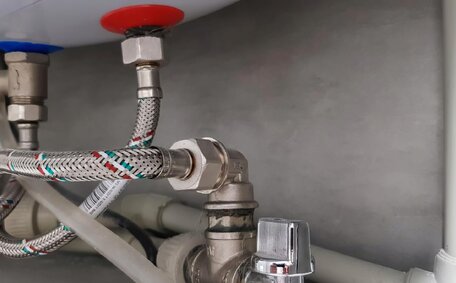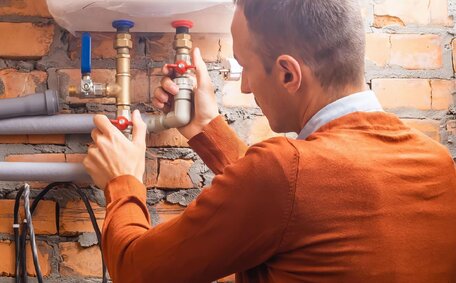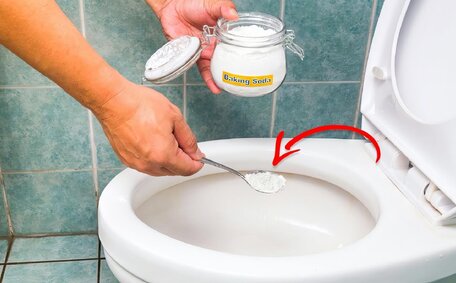Average lifespan and replacement needs for gas pipelines
Gas pipelines are generally engineered for a lifespan exceeding 50 years, but with diligent installation and maintenance, alongside quality materials, their service period can extend much further. Factors like pipe material, burial depth, soil conditions, and operating pressures impact pipeline lifespan.
Steel pipelines, when equipped with anti-corrosion coatings, buried more deeply, exposed to lower pressures, and regularly inspected, can function effectively for over 70 years. Cast iron pipes from over 50 years ago are no longer considered reliable and are at very high replacement risk.
Plastic pipelines frequently surpass the 50-year mark, owing to their durable nature. However, a pipeline can have a shorter lifespan if it’s subject to corrosion or stress.
Beyond lifespan, pipeline replacement decisions consider safety, reliability and economics. Leaks, fractures or blocked pipes drive replacement needs. As pipelines age, vigilance around corrosion and cracks increases, requiring ongoing monitoring and maintenance.
With natural gas demand fluctuating amid renewable transitions, some gas transmission lines may see lower utilisation. While this extends lifespan through reduced wear, it challenges economic viability. Owners must evaluate the trade-off between the expense of replacement and expected transport revenue.
Typical materials used in gas pipeline construction
Although widely used for its resistance to corrosion, polyethylene in gas pipelines is susceptible to temperature-induced deterioration.
HDPE piping, constituting roughly a quarter of gas pipelines, sees enhanced longevity with meticulous installation and correct burial depths.
But plastic can be prone to damage from soil settlements, temperature fluctuations or joint failures.
Other materials like fibreglass, ductile iron or even concrete pipes are used in some gas pipeline applications. However, steel and HDPE are preferred for their cost-effectiveness and long-term technical dependability.
Environmental factors impacting gas pipeline durability
Gas pipelines face several key environmental threats that jeopardise durability over time. Acidic, wet, or shifting soils accelerate external corrosion and coating damage on pipes. Expanding or contracting plastic pipes may crack, while steel can buckle under thermal cycles.
Soil characteristics pose one major challenge. Another issue is temperature extremes which cause material stresses.
Nearby construction activities also take a toll, as vibrations or earth movements put mechanical strain on pipelines. But natural disasters like floods, storms and bushfires pose some of the biggest risks.
Raging floodwaters can induce stress on pipelines, and lightning strikes may impair cathodic protection systems. Such events also hamper post-disaster inspection and repair efforts.
Environmental variability means pipelines require ongoing safeguarding through maintenance programmes. Activities like recoating, slope stabilisation, drainage controls, or installing thermal relief facilities help fortify pipes against corrosion, cracks and fatigue over time. With climate change accelerating some threats, vigilance around monitoring and protecting pipeline integrity remains vital.
Routine inspection and maintenance requirements
Regular inspection and preventive maintenance are crucial for maximising gas pipeline lifespan. Industry guidelines mandate certain ongoing activities to spot emerging issues early.
Pipeline operators conduct periodic patrols and leak surveys using gas detectors, facilitating early identification and repair of potential corrosion. Cleaning pipeline interiors, recoating exteriors, and patching damaged sections help avoid larger failures. Testing cathodic protection effectiveness and Stabilising the soil pH near pipes is also crucial for preventing corrosion.
For plastic pipes, inspection focuses on thermal expansion and joint integrity.
Technicians check for cracked or warped sections. Venting accumulating gases or rerouting around faults are key. Keeping precise location records aids maintenance and repairs.
The frequency of such activities may be yearly or up to every 5 years depending on regulations. Execution during non-peak demand periods limits supply disruptions. While inspections and repairs entail costs, routine maintenance reduces the likelihood of catastrophic, expensive pipeline failures in the long run.
Economic considerations for aging gas pipeline infrastructure
As gas pipelines age beyond 50 years, pipeline owners face economic decisions around further maintenance investments versus replacement. Depreciation schedules, maintenance costs, and lost gas volumes from leaks must be weighed against pipe replacement outlays.
Upkeep of ageing pipelines demands considerable investment in inspection, repair, and corrosion prevention. But replacement with lengthy new pipelines is also capital-intensive. The installation of a contemporary pipeline, inclusive of advanced monitoring systems, typically costs in excess of $1 million per kilometre.
Uncertainties in Australia’s gas consumption due to renewable energy growth pose stranded asset risks for pipeline companies, including those managing vital connections such as the Dampier Bunbury line. Declining flow volumes undermine the economics of ageing pipelines. While essential for communities relying on gas, some regional pipes may not be viable at lowered utilisation rates.
Ultimately pipeline owners must determine if refurbishment and maintenance can deliver another 20 years of safe, reliable service. While gas infrastructure maintains its economic value, it requires astute lifecycle management to navigate the ongoing energy transitions.
Impacts of renewable energy growth on pipeline demand
The global transition towards renewable energy poses complex questions around long-term natural gas demand. As more solar, wind and batteries displace fossil fuels, gas consumption outlooks show slower growth. Modelling suggests Australian gas usage may peak by 2030.
This has implications for pipeline planning and investments. New transmission pipelines are costly, lengthy projects — difficult to justify amid uncertain demand. Even existing pipelines could see utilisation fall below viable thresholds, raising abandonment questions.
Continued bookings of firm capacity on key pipelines reflect ongoing trust in gas to balance the inconsistencies of renewable energy sources.
However, diminished pipeline flows might spur pressure for changes in regulations regarding access and tariffs.
Planning for pipeline abandonment and removal
With some gas pipelines facing declining use, proper abandonment protocols become vital. Pipeline owners must develop comprehensive plans addressing costs, responsibilities and rehabilitation obligations.
Full removal is preferred but may not always be feasible, especially for large pipelines. Companies should consult landowners and community stakeholders when evaluating partial abandonment involving decommissioning and burial. Complete elimination of safety hazards is paramount, through purging gases and sealing endpoints.
Abandonment planning should account for expenses like pipe cleaning, dismantling facilities, remediating soil and restoring landscapes. Financial provisions need to be in place before operations cease rather than transferring liability. Strict permit conditions around rehabilitation can enforce accountability.
Well-managed abandonment minimises public asset stranding risks. But oversight is essential as shifts in pipeline demand accelerate. Communities deserve protection from additional costs when industries and infrastructures evolve.
Ensuring proper pipeline burial depth
Adhering to regulated gas pipeline burial depth standards is vital for safety and longevity. In Australia, rural area pipelines require a minimum of 750 mm soil coverage, while urban zones necessitate at least 900 mm. Even deeper burial applies near railways or busy roads.
These burial rules aim to protect infrastructure from threats like corrosion and third-party damage from construction or vehicles. Shallower pipelines risk exposure from erosion or ground shifts over time. Deeper burial also provides stability against thermal expansion stresses.
During installation, pipeline burial depth is continually verified through surveying. Following commissioning, companies must record the route and burial depth of pipelines at regular intervals, commonly every 500 metres. Accuracy here facilitates future maintenance, repairs or upgrades.
While achieving mandated depths raises pipeline costs, it prevents incident hazards and disruption. Utilities rely on contractors closely following standards through careful trenching, padding and backfilling. Once operational, pipeline depth checks confirm pipes remain adequately covered for protection.
Managing risks during pipeline abandonment
Abandoning gas pipelines poses safety and environmental risks that require careful management. Key dangers include pipe leaks or ruptures if gases are not fully purged, pipeline collapse if improperly structurally secured, and soil or water contamination from residues.
Companies must follow rigorous purging protocols to remove remaining gases and avoid leaks or explosions. Pipelines may be cleaned then filled with inert materials to maintain structural integrity.
Endpoints should be permanently sealed. Ongoing monitoring would detect any post-abandonment leaks.
Environmental assessments help mitigate ecological impacts. Companies must rehabilitate any sites, contain hazardous substances and remediate any chemical residues in surrounding soil or water. Financial provisions should be in place for remediation costs not covered by rehabilitation bonds.
Through diligent preparation, purging, sealing, and monitoring, pipeline abandonment can be conducted with safety as a priority. But oversight and transparency around risks and responsibilities are crucial to prevent environmental damage or harm to communities.
Landowner rights and responsibilities
Landowners have defined rights and obligations regarding the gas pipelines traversing their land, as stipulated in easement agreements with the operators.
Landowners hold the authority to prohibit activities like excavation or construction that may jeopardise the pipelines. They are also required to provide reasonable access to the operators for pipeline maintenance and inspections. Additionally, landowners can request verification that the pipelines meet the set safety standards.
Should pipeline repairs cause damage to the land, it is incumbent upon the operators to restore the property. Landowners normally have the right to compensation for disruptions to their land during maintenance works. Furthermore, landowners possess bargaining strength when discussing the renewal of easements.
Nonetheless, in the case of pipeline abandonment, landowners may face risks if rehabilitation bonds are insufficient, although regulatory efforts aim to preempt such scenarios. Decommissioning procedures should incorporate landowner feedback regarding methods of route closure post-gas extraction.
Landowners rightfully expect clarity concerning pipeline standards and the strategies for pipeline decommissioning. They should not shoulder excessive burdens from infrastructure that serves the broader energy framework. Responsibilities fall more heavily on operators and regulators to uphold safety and environmental protections.






